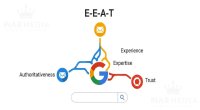A Guide to Starting E-Commerce From Scratch: Site Setup and Marketing
How to build an e-commerce site from scratch? A comprehensive 2025 guide covering all steps from the idea stage to the first sale (company formation, platform selection, marketing). You will find answers to all your questions related to topic A Guide to Starting E-Commerce From Scratch: Site Setup and Marketing in the continuation of the text.

E-Commerce Site Creation Guide: A Step-by-Step Roadmap from Dream to First Sale (2025)
Part 1: Planning and Strategy (Laying a Solid Foundation)
Step 1: Business Idea and Niche Market Analysis
Step 2: Create Your Brand Identity
Step 3: Legal Processes and Company Formation
Part 2: Setup and Technical Processes (Cooking in the Kitchen)
Step 4: Strategic Platform Choice: Hosted Packages or Custom Software?
Step 5: Domain Name and Hosting Selection
Step 6: Design and User Experience (UX)
Step 7: Showcasing Your Products
Step 8: Payment and Shipping Integrations
Part 3: Launch and Growth (Opening the Shop and Attracting Customers)
Step 9: Attracting Your First Customers: Ignite the Marketing Engine
Step 10: Analysis and Optimization
Conclusion: The Journey from Dream to Reality
You have an idea. Maybe it's your handmade products, maybe it's a gap you've seen in the market... You dream of turning your idea into a profitable e-commerce business. You envision the moment you'll receive that first order email, the moment you'll prepare the package for your own brand. But then that big question arises: Where do I start?
E-Commerce Site Creation Guide: A Step-by-Step Roadmap from Dream to First Sale (2025)
The internet is full of promises like "build a site in 1 day." However, a successful e-commerce business is much more than just setting up a website. Our guide is a journey of building a strategy, a brand, and an operation. It has been prepared not just to show you the technical steps, but also the strategic ones an entrepreneur must take, to light the way between that dream and the "New Order!" email of your first sale.
Part 1: Planning and Strategy (Laying a Solid Foundation)
Like any great structure, a successful e-commerce business is built on a solid foundation:
Step 1: Business Idea and Niche Market Analysis
More important than the question "What will I sell?" is the question, "Who will I sell to, and why should they buy from me?" Trying to sell everything to everyone usually results in selling nothing to no one.
- Define Your Niche: Instead of "women's shoes," focus on a specific area like "vegan leather, handmade women's boots."
- Know Your Target Audience: Who is your ideal customer? What do they read, where do they spend their time, what are their problems?
- Conduct Competitor Analysis: Who are your competitors? What are they doing, and where are they lacking? What will be your differentiator?
Step 2: Create Your Brand Identity
People don't just buy a product; they also buy into a brand's story and feeling.
- Brand Name: Choose a name that is memorable, meaningful, and available as a domain name.
- Logo and Visual World: Determine a logo, color palette, and fonts that reflect your brand's character. This is the first proof of your professionalism, and getting support from a professional graphic design agency for this is one of the best investments you can make.
Step 3: Legal Processes and Company Formation
E-commerce is a business, and like any business, it must have a legal foundation. Don't let this step intimidate you.
- Company Type: The most common option for starting out is usually a Sole Proprietorship. It is easy to set up and has low costs. You can switch to a Limited Liability Company as you grow.
- Taxes and E-Invoicing: You must work with a financial advisor to get your tax registration and enroll in the e-invoice/e-archive system. This is mandatory to be able to sell legally.
Warning: Always seek professional advice from a financial advisor or accountant for legal processes.
Part 2: Setup and Technical Processes (Cooking in the Kitchen)
Our strategy is ready; now it's time to build the shop.
Step 4: Strategic Platform Choice: Hosted Packages or Custom Software?
This is the most important technical decision in your e-commerce journey. Unlike our competitors, we won't tell you "this is the best one." We will explain the options and their strategic differences.
- Rented (SaaS) Platforms (Shopify, ikas, Ticimax):
- Advantages: Quick setup, no technical knowledge required, security and updates are managed by the provider. Ideal for beginners.
- Disadvantages: Monthly/annual fees, per-sale commissions, limited flexibility in design and features.
- Open-Source (WooCommerce - WordPress):
- Advantages: Full control and flexibility, no commissions, strong SEO foundation, customization with thousands of plugins.
- Disadvantages: Requires technical knowledge, security and maintenance are your responsibility.
- Custom Software:
- Who is it for? Suitable for large-scale, high-budget businesses with very specific needs that standard platforms cannot meet.
For more on this topic, we recommend you check out our e-commerce selection guide, 'Shopify or WooCommerce?'. If you feel lost while making a decision, getting support from an impartial advertising agency that is focused solely on your success can save you from major expenses in the future.
Step 5: Domain Name and Hosting Selection
Your domain name is your brand's digital address, and hosting is the land your shop is on. Ensure your domain name is short, memorable, and consistent with your brand. Prioritize speed, security, and support quality when choosing hosting.
Step 6: Design and User Experience (UX)
Your website is your most important storefront, open 24/7. For a design that converts visitors into customers:
- Build Trust: A professional, clean, and modern design.
- Ensure Ease of Use: Visitors should be able to find the product they are looking for in 3 clicks.
- Be Mobile-Focused: 70% of your customers will visit your site from mobile devices. A mobile-friendly (responsive) design is not a luxury, it's a necessity.
For these critical processes, working with a web design agency that creates designs that are not just beautiful but also generate sales makes a difference.
Step 7: Showcasing Your Products
- Product Photos: Online, a product cannot be "touched," so your photos must be flawless. Use high-resolution images from different angles that show details.
- Product Descriptions: Don't just list features. Write persuasive, SEO-friendly text that explains the benefits the product will bring to the customer's life.
Step 8: Payment and Shipping Integrations
You don't want to lose a customer at the checkout due to payment or shipping issues.
- Payment Gateway: Work with reliable, licensed payment providers like iyzico or PayTR to easily accept payments from all bank cards.
- Shipping Agreement: Partner with reliable shipping companies to offer your customers affordable and fast delivery options.
Part 3: Launch and Growth (Opening the Shop and Attracting Customers)
Your site is now ready. Now the most exciting part begins: inviting your customers in.
Step 9: Attracting Your First Customers: Ignite the Marketing Engine
The work doesn't end with building your site; it's actually just beginning. The key marketing channels you should focus on initially are:
- SEO: Search Engine Optimization (SEO) is the foundation of long-term, sustainable, and free customer acquisition.
- Google Ads: Advertising on Google, especially with Google Shopping ads, allows you to instantly reach an audience with high purchase intent.
- Social Media Marketing: Build brand awareness and reach your potential customers with targeted ads.
To learn how to manage these channels in harmony, be sure to check out our comprehensive E-Commerce Marketing Strategies guide on the topic.
Step 10: Analysis and Optimization
Continuously monitor your site's traffic, best-selling products, and at what stage customers abandon their carts using tools like Google Analytics. Remember, e-commerce is a marathon that requires constant improvement.
Conclusion: The Journey from Dream to Reality
Building an e-commerce site is not a get-rich-quick scheme, but a sustainable business model built with the right steps and patience. The journey you are about to embark on may seem complex at first, but with a correct roadmap and professional support when needed, it is absolutely possible to turn your dreams into a profitable business.
Do you need a strategic partner who will be with you every step of the way on your journey? Get to know Piar Medya's e-commerce consulting service, and let's turn your dreams into reality together.






